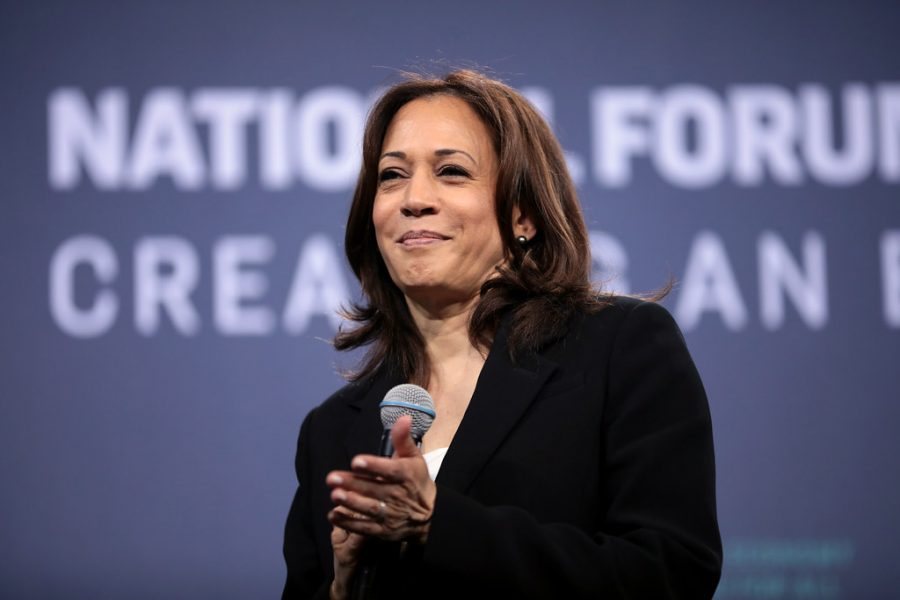Vice president visits NYC to promote new climate initiatives
November 19, 2021
While President Joe Biden has been focused on tackling the climate crisis abroad, Vice President Kamala Harris has been traveling nationwide, announcing eco-friendly programs and promoting the federal government’s proposed climate initiatives.
Harris visited John F. Kennedy airport on Nov. 1 with U.S. Department of Energy Secretary Jennifer Granholm to announce two new climate initiatives to tackle the climate crisis and create jobs.
One initiative involves $127 million in federal funding for the creation of medium- and heavy- duty trucks that produce zero carbon dioxide emissions, according to NBC News.
The investment in electric vehicles, clean energy and clean manufacturing will not only combat the climate crisis, but also create jobs in New York City as autoworkers will manufacture electric cars and electric school buses, plumbers will replace lead pipes and young people will join the new Civilian Climate Corps, according to NY1.
The other initiative is a partnership between the Energy Department and heating, ventilation and air conditioning manufacturers to expedite the development of electric heat pumps that function in cold conditions, which are both cheaper and eco-friendly.
Harris also promoted the bipartisan infrastructure bill, which was recently signed into law, and the Build Back Better framework. It contains $555 billion in spending to combat climate change.
Harris’s joint announcement follows a visit on Oct. 22 to the Northeast Bronx YMCA where she promoted the Biden administration’s Build Back Better framework alongside Secretary of the U.S. Department of Health and Human Services Xavier Becerra, according to the Daily News.
Donnel Baird, founder of BlocPower, a Brooklyn-based energy technology startup, explained to Harris how gas and oil will be replaced with all-electric heating and cooling systems and the importance of American workers learning the installation process.
He further explained this will save landlords money and reduce greenhouse gases emissions, as 30% of them come from buildings, according to ABC News NY.
Harris was also welcomed by some criticism. One man asserted better infrastructure in the community could have prevented deaths caused by the remnants of Hurricane Ida, according to The Daily News.
On the other side of the world, COP26 is witnessing a strong sense of urgency from climate activists and leaders for serious plans and policies in response to the growing number of climate catastrophes.
“Enough of burning and drilling and mining our way deeper,” U.N. Secretary General António Guterres said, according to the The New York Times. “We are digging our own graves.”
However, it seems like the promises the United States is making aren’t enough, as world leaders look to hold it more accountable for its promises.
“They’ve come back again, but their ambition must be much higher,” Mohamed Nasheed, former president of the Maldives, said to the The New York Times.“The United States is the richest country on the planet. They of course have emitted more carbon than anyone else. And there’s a historical responsibility.”
The United States is making a myriad of promises and emphasizing a strong return to its forgotten promises, albeit a prominent part of the infrastructure bill, which encourages the power sector to move from fossil fuels to renewable energy, will likely be removed due to Sen. Joe Manchin’s objections.
Another issue the Biden administration faces is the Supreme Court’s deliberation over whether the Environmental Protection Agency has gone beyond its authority by attempting to limit greenhouse gas emissions from power plants. An unfavorable ruling would delay Biden as he attempts to take stronger measures to cut pollution.
Aside from these potential setbacks, these new initiatives have the potential to set the United States back on track to meet its promised goals.
White House National Climate Advisor Gina McCarthy said that the infrastructure bill and Build Back Better framework will put the United States “on a decisive path to achieve our climate goals of reducing emissions 50 to 52% by 2030 and achieving a net-zero economy by 2050,” according to NY1.








